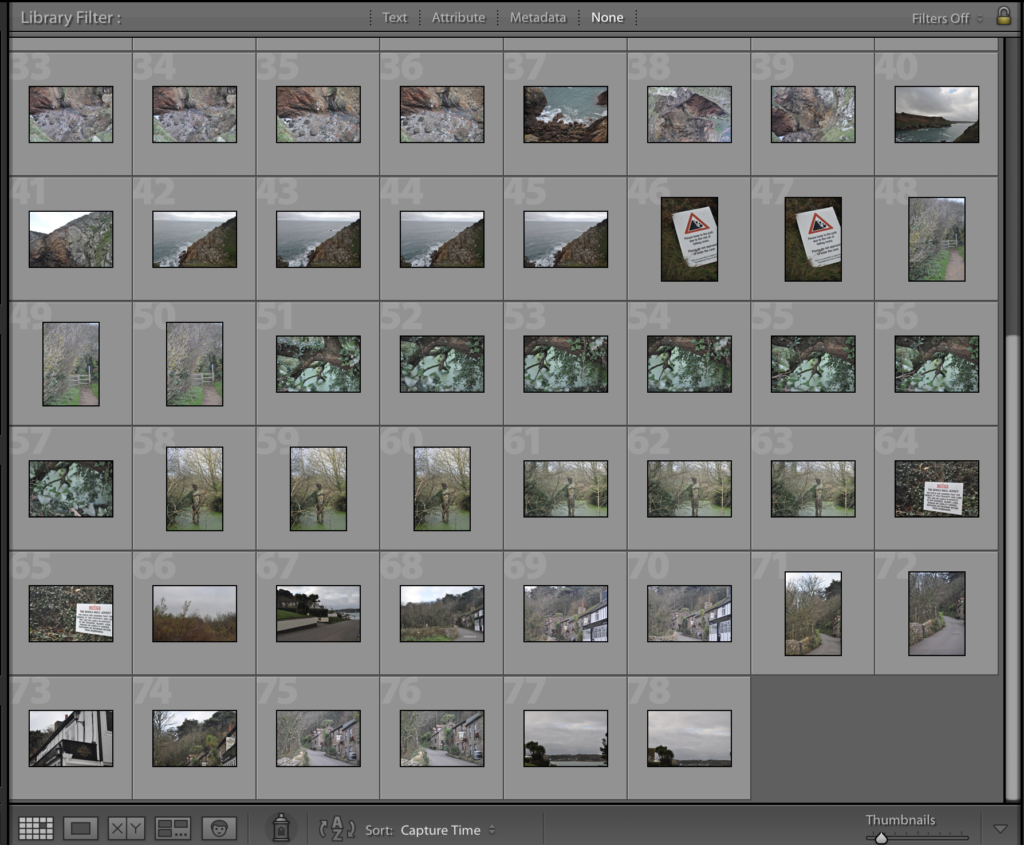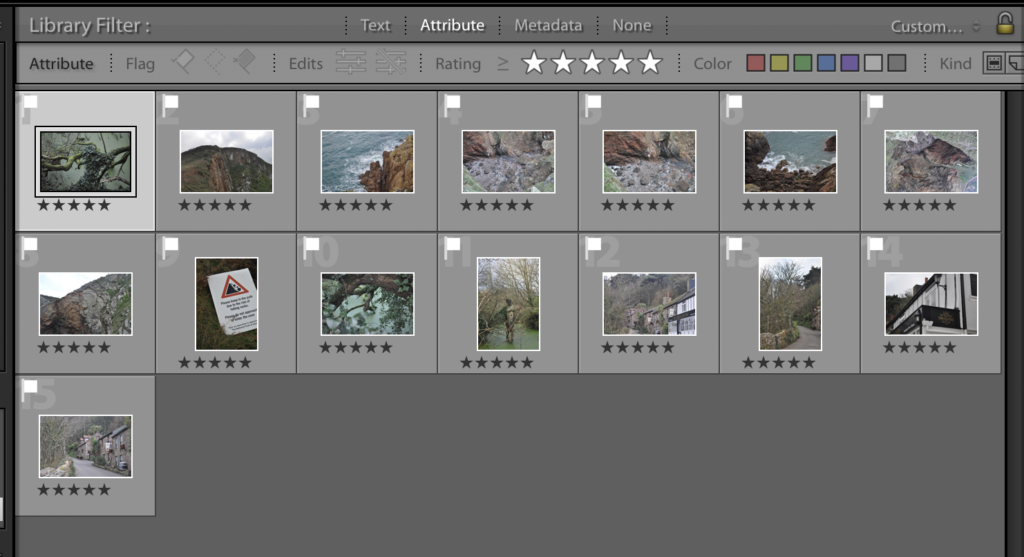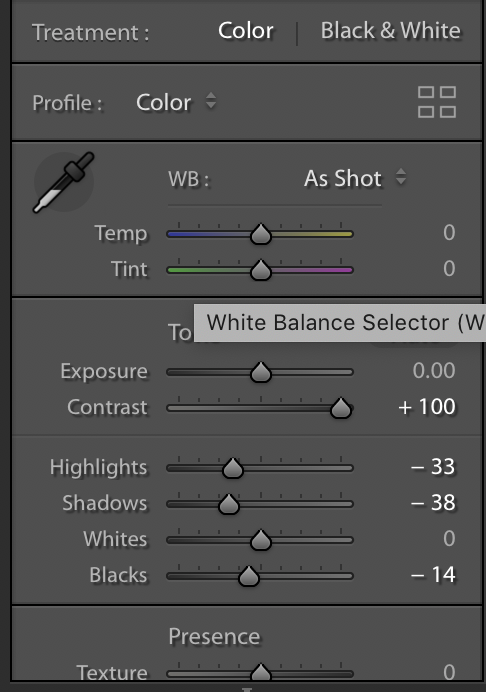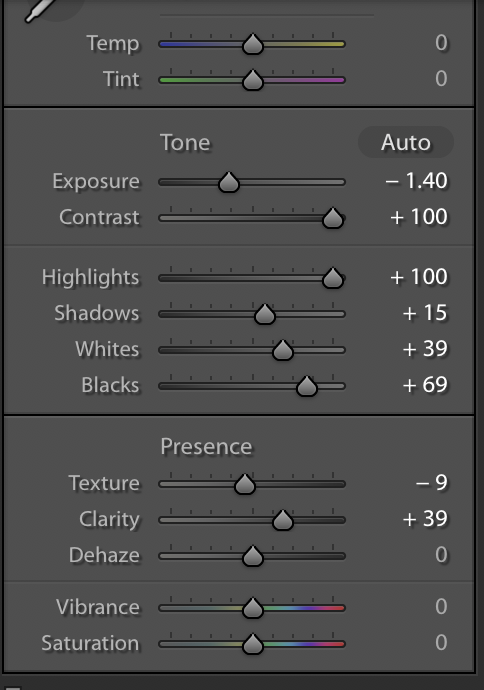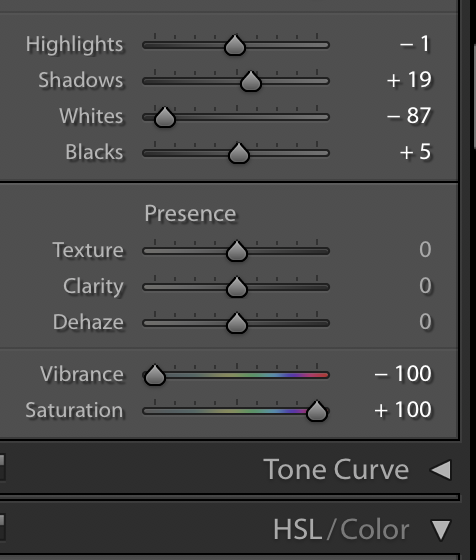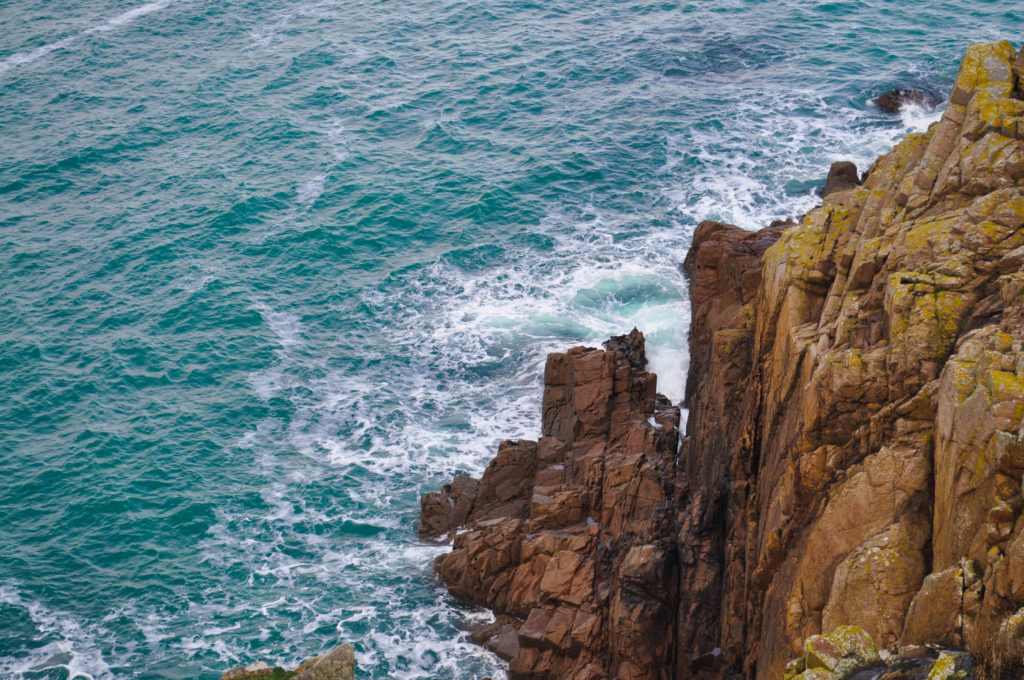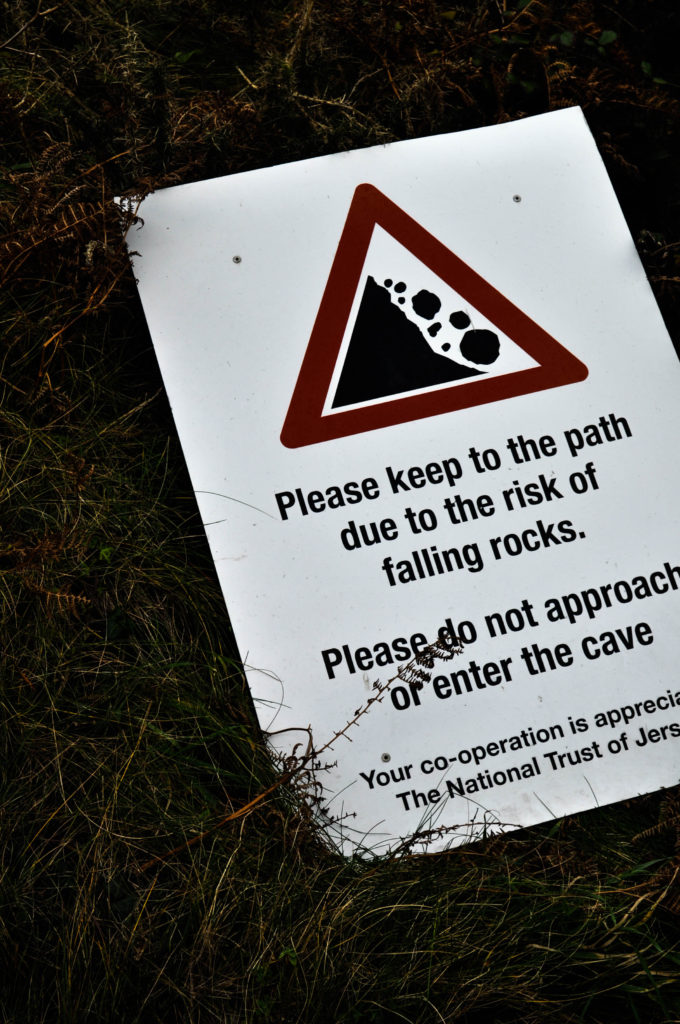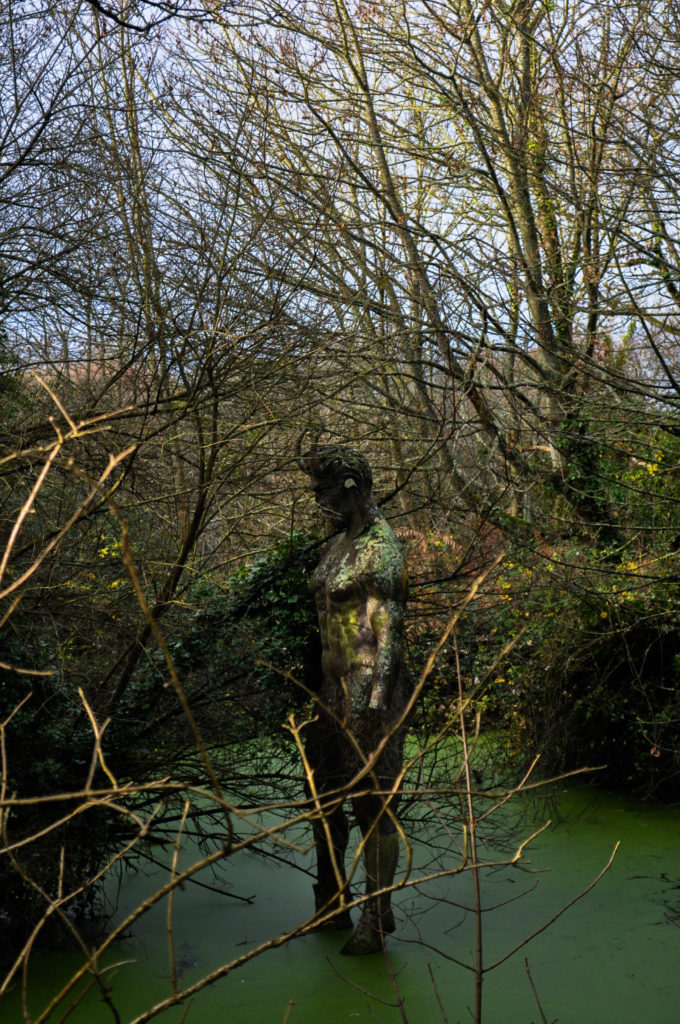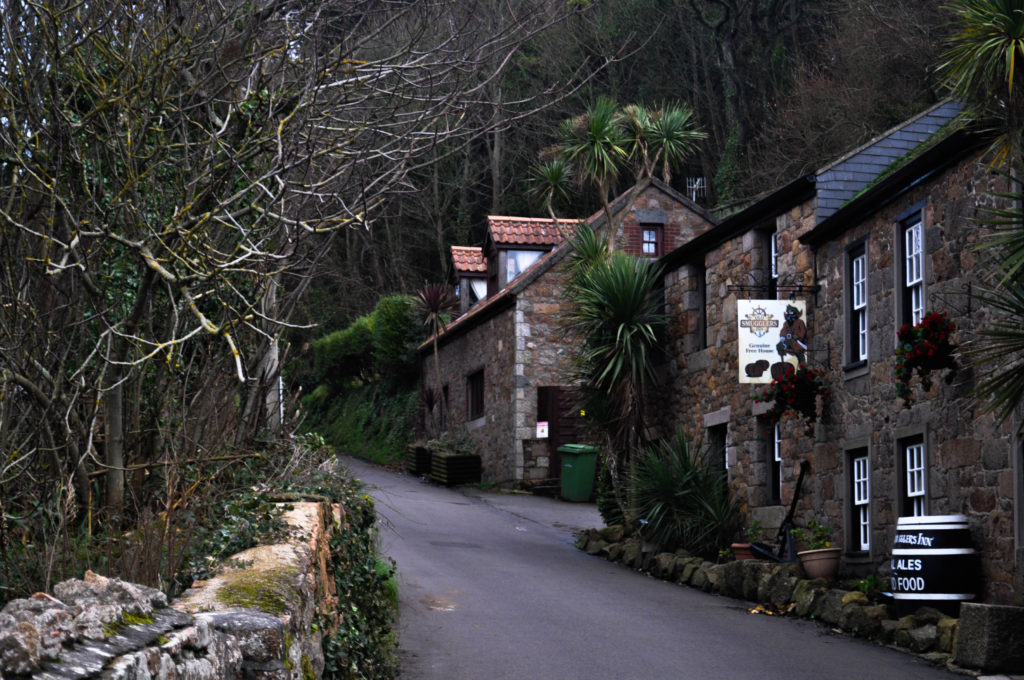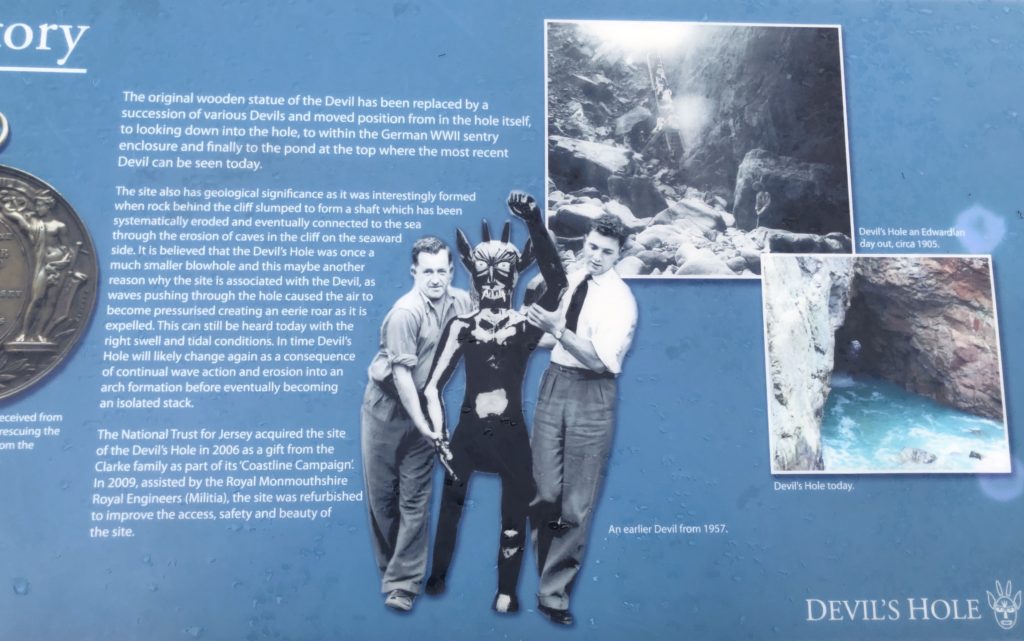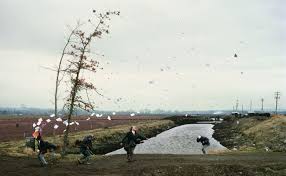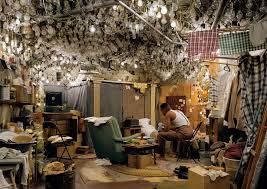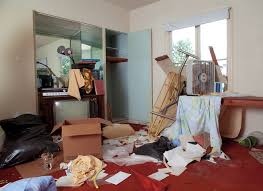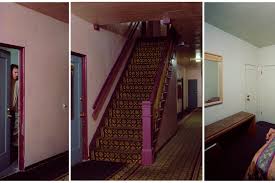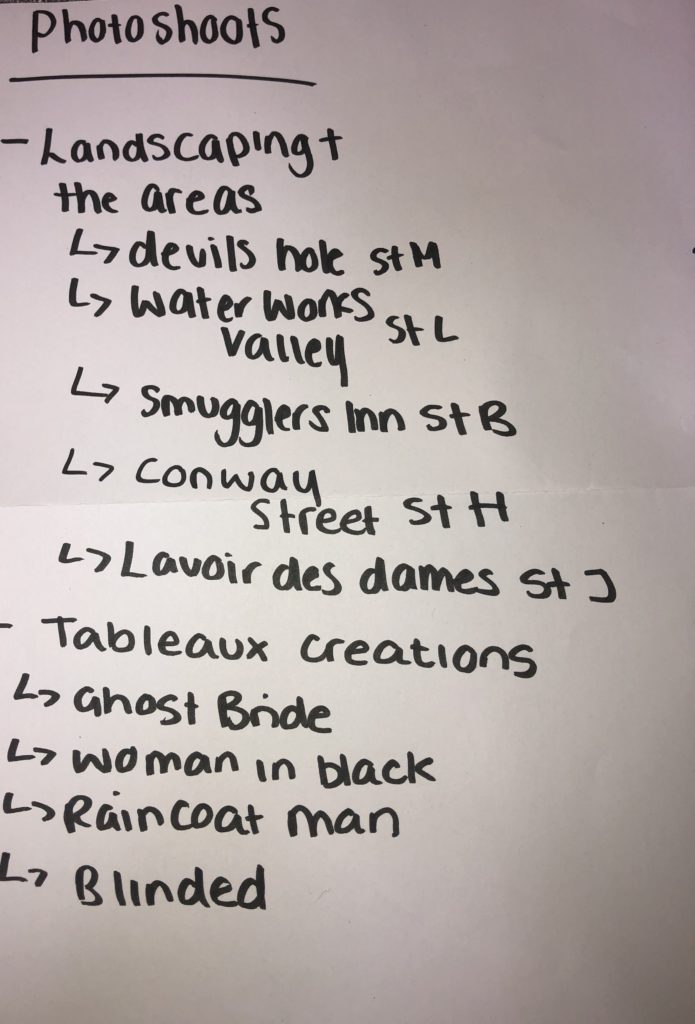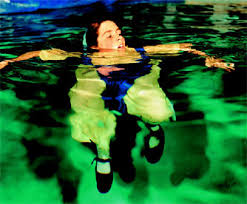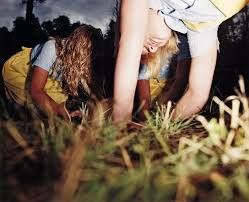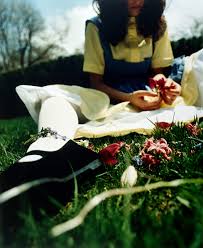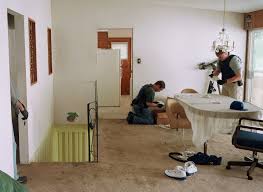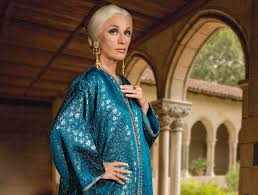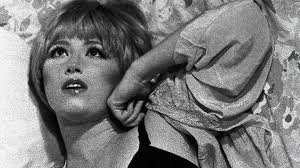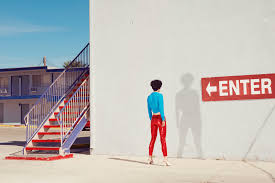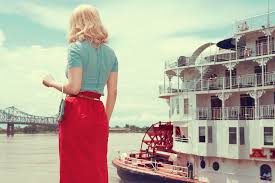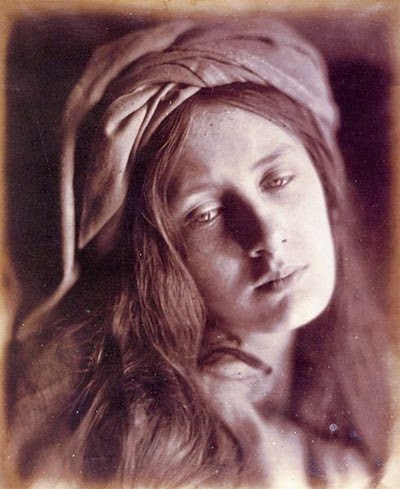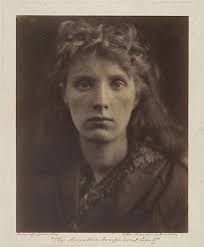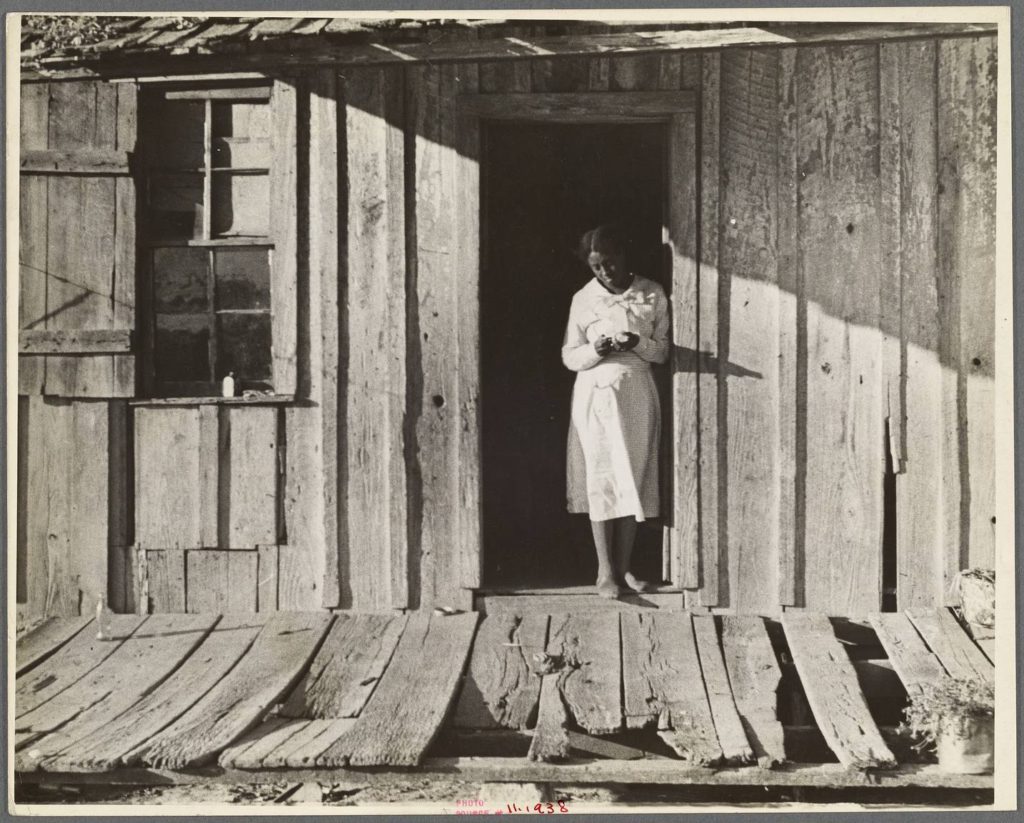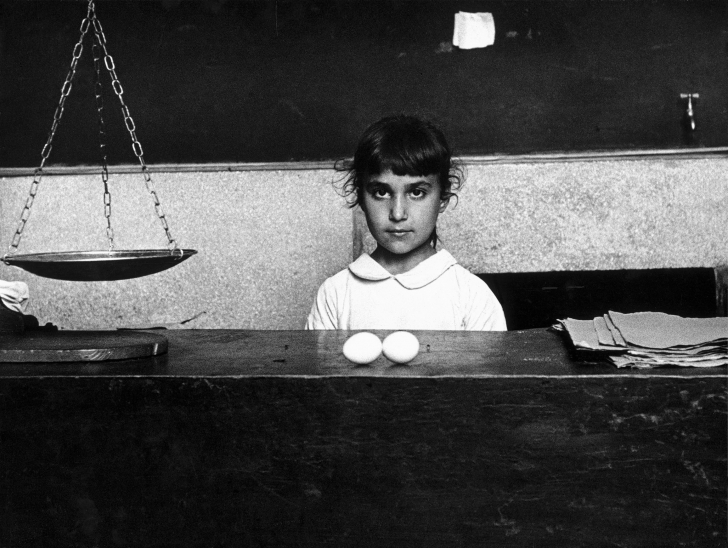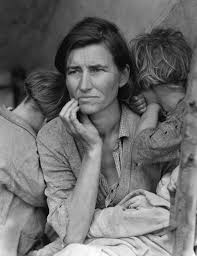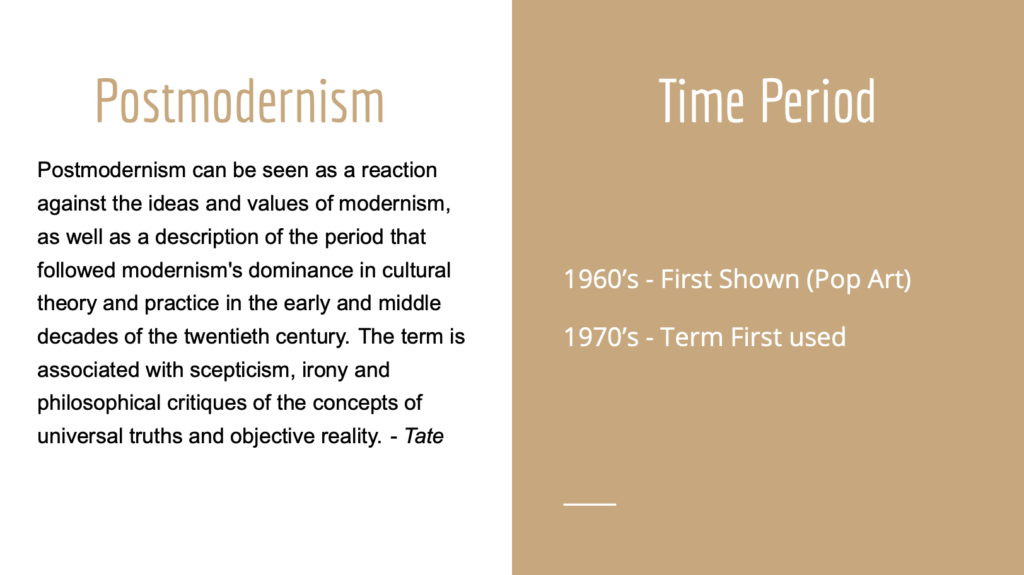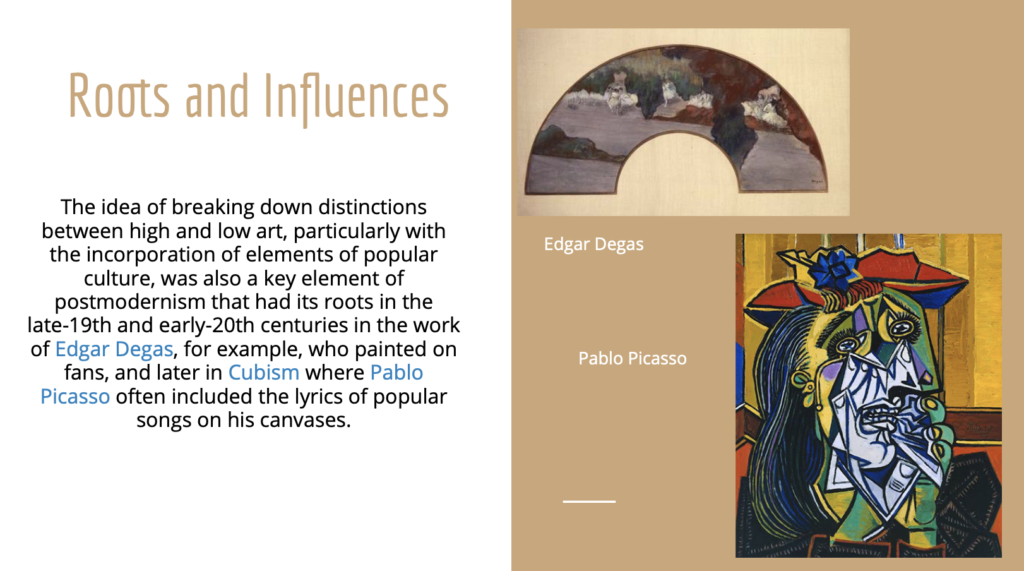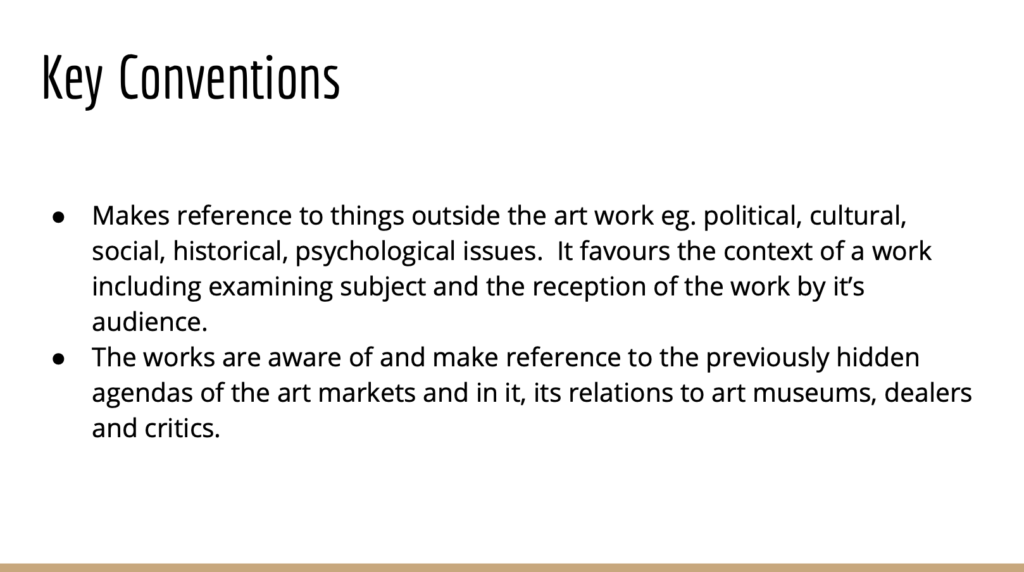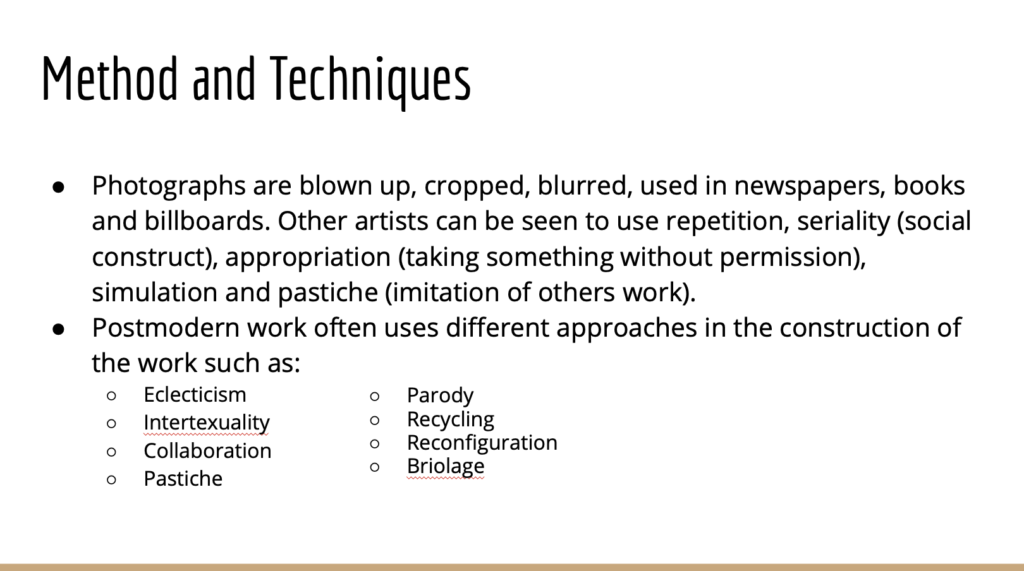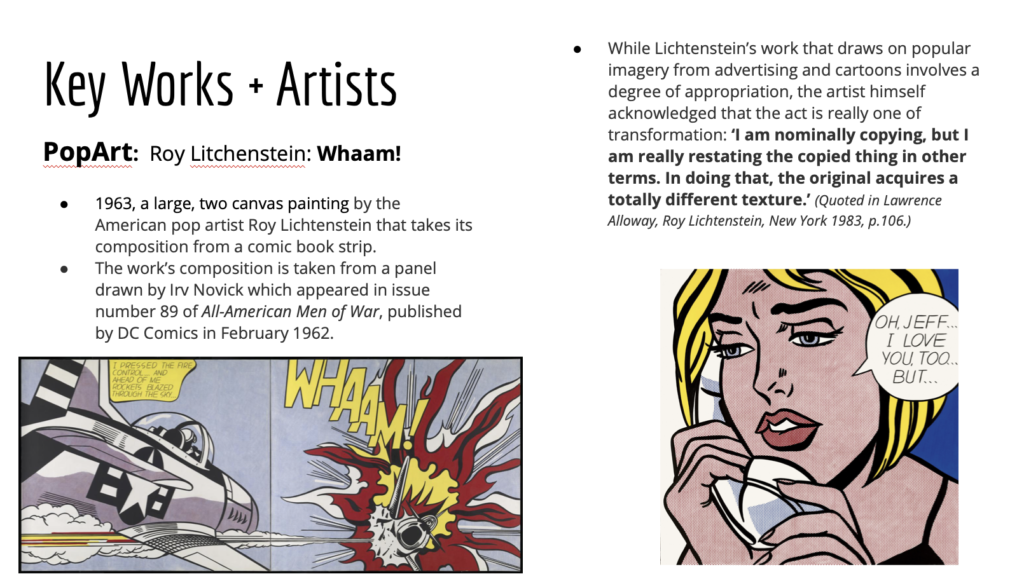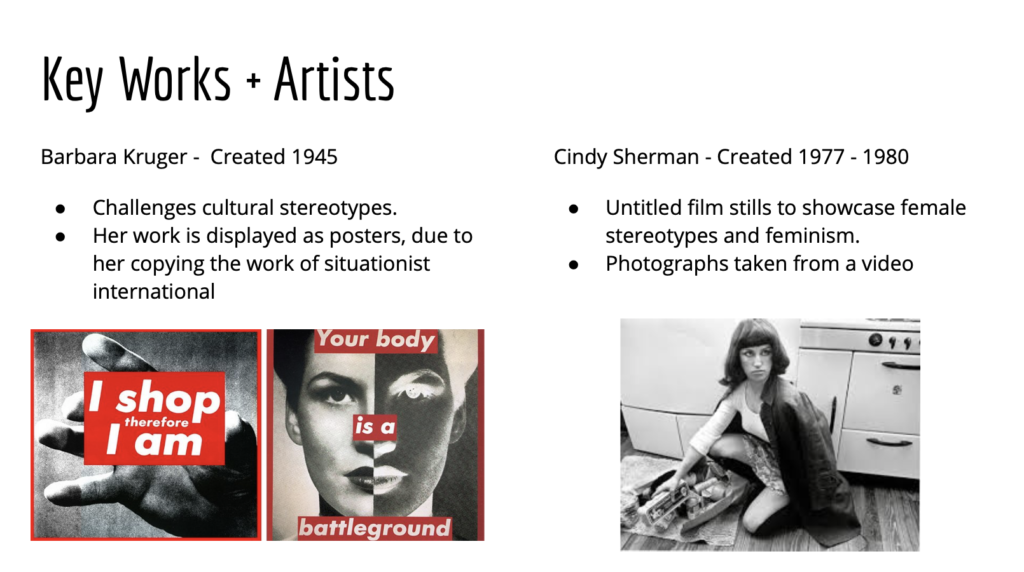After starting some research into the legends I went out to start my first photoshoots. For this first photoshoot of landscapes I went out to Devil’s Hole in St Mary and the Old Smugglers Inn in St Brelade. I went out for this photoshoot at around midday on quite a cloudy and drizzly day. I felt this was a good time to go out to create the landscape photographs as I still had a good natural light source due to the time of day however due to the weather on the day it produced quite a gloomy and eery aura to the photographs which I feel is good and useful as I am trying to reflect something slightly eery and mysterious with the subject of these being legends and stories. The aim of this photoshoot was to go out and create a portrayal of the reminiscence on the landscapes and the island. One of my aims was to capture photographs of the actual Smugglers Inn Pub as well as the statue found on the trail to Devil’s Hole as these are some of the main aspects of the stories as well as the cave itself. Below I have my contact sheets of my photoshoot from the locations as well as the sheets from when I started to narrow down the photographs before I started to edit the photographs. I flagged down the photographs and then I also star rated them to help me decide which photographs I could potentially use in the final outcome of my personal investigation and which I would use to edit.
In order to narrow down my photographs for editing and experimenting with I had to decide and find which would be most relevant for my wants towards the final outcome of the whole investigation. For devils hole, ones with the statue and the caves where my main aim and focus to get as I feel they will help to tell the most story and be the most useful towards the outcomes and narrative of the storytelling. I have also tried to include some minimal photograph close ups of the landscape and the nature surroundings, as the landscape was so diverse. For the Old Smugglers Inn I wanted to try and mainly focus on the actual building of the pub as well as the landscaped hill leading down to it to create a narrative of the area and the surroundings of where the stories happened.
For the editing of my photographs I chose 8 out of the photoshoot to edit and experiment with, although 8 might end up being too many for the final outcome I feel if I have 8 to edit and choose from this gives me a wide range to explore with and hopefully use in the final photo-book of the personal investigation. For the actual editing part of these photographs I have explored editing the contrasts mainly and highlights and the shadows of the photographs. For some of the photographs I also experimented with some of the colour filters for the added extra effect depending on how easy the photograph was to work with in the first place as some were difficult to just adjust the contrasts and exposures deepening on how the light was sitting in that photograph.
Below are showing thew outcomes from the Devil’s Hole portion of my photoshoot. As I came to the cliff path and walk of the hole I came across some difficulties with taking pictures of the statue of the demon in the lake. It was missing it’s hands but also that it was difficult to get an up close photograph of the statue as once you were able to get quite close there was a lot of foliage and branches in the way, I have the idea that when I return to do the tableaux shoots I will retake some photographs of the statue as I will have extra hands that will help to move and keep branches out of the way. Even though the statue has been replaced over time I still feel that it holds significance to the tale and the place as the head was that of the ship that wrecked and helped to create and keep the legend of Devil’s Hole alive. The photograph I did manage to capture is a side view of the statue, with the editing and using contact effects I feel I have been able to develop at least one outcome of the shoot that I feel was successful. I was able to produce two outcomes of the landscape cliffs that are the hole itself as well as the cliffs and sea below, I think that these outcomes were successful. I liked these photographs as I feel it helps to depict thee surroundings of the legend and the stories, these cliff paths have been opened up to the public, as the main part of the legend is set on the cliff path and the cave below I feel it is important to the story to capture as when the water rises into the cave it creates such booming noises which add to the story and legend of Devil’s Hole. For my last two pictures from this shoot I wanted to capture something small and different I feel that the log going into the lake created for an interesting photograph, I enjoy the lines and shapes that are created into it as well as the green algae sitting on top of the water, after the editing I feel this has become one of my favourite photographs from the shoot. The image of the sign I created I wanted to capture something different that showed how the space had been adapted to involve the public into the legend by allowing them into the space which is something important to capture when looking into how these stories and myths have effected and occupied the landscape and the public.
Below show my outcomes from the Old Smugglers Inn from the photoshoot. I found this place harder to capture as I couldn’t take photographs inside the building as it is an indoor public space and I cannot avoid not taking pictures of people inside so was only able to capture the outside of the building and the surroundings of the pub. For my photographs I tool pictures of the actual building and connecting cottages and tried to experiment with some of the angles I was using to create the photographs, for example the one with the writing of the Old Smugglers Inn I tired to shoot it from a lower angel looking up to create a different effect than I had done with the other photographs in this portion of the shoot which is why I chose that photograph to edit and explore. For the photograph of the building and the connecting cottages I walked further down the road towards the beach to capture it looking up the road rather than head on and flat to the building as I felt it created for a more of an interesting photograph to experiment with and I believe helps to give then sense of the surroundings and showing how the legend is somewhere in everyday life of the public and the landscape. I took the photograph towards the beach to include something slightly different and away from actually looking at the legend but instead just the surroundings and the parts connected that are just everyday life, as well I feel it helps to connect the other parts of the legend with the idea of pirates staying and lodging in the Old Smugglers Inn which would have come from the slip paths from the beaches. The last photograph from the shoot I have chosen to edit is one that I again took up the road, I edited this photograph a little differently by putting a filter over the top while editing in Lightroom as I felt it made it more interesting and gave it more character compared to when I just edited with the contact and exposures normally, I feel that the warm tones and the photograph not being completely crisp but still clear create an effect of it being older and more mysterious which is something I wanted to gain out of this photoshoot and editing to produce the idea of it being a mystery, legend and story incorporating its way into our lives which I feel I have been able to start to suggest in the photographs.


